Products
Click here for the 2017 Catalogue.
Our slogan is to provide the best Customer Satisfaction, in order to achive this aim we use only premium quality products from the most reknowable companies from Germany and Western European countries. In order to let you achive the maximum from the Sun energy, we olny install the suitable Photovoltaic pannels which has been developed extra for tropical regions.
There are choises for the Solar Accumulators (Batteries) which range from complete Pack to expandable Packs. You can choose between :
Lead Acid
The common automobile batteries in which the electrodes are grids of metallic lead containing lead oxides that change in composition during charging and discharging. The electrolyte is dilute sulfuric acid.
Even after over 100 years, the Lead-Acid battery is still the battery of choice for 99% of solar and backup power systems. With the better availability during the last few years of the new AGM batteries and the true deep-cycle batteries, we feel that there is little reason to use any other type. Industrial type batteries can last as long as 20 years with moderate care, and even standard deep cycle batteries, such as the golf car type, should last 3-5 years. Intermediate batteries, such as the S460 and other batteries made by Surrette should last 7 to 12 years
NiCad (Nickel Cadmium)
Alkaline storage batteries in which the positive active material is nickel oxide and the negative contains cadmium.
Downsides:
- Very expensive
- Very expensive to dispose of - Cadmium is considered VERY hazardous.
- Low efficiency (65-80%)
- Non-standard voltage and charging curves may make it difficult to use some equipment, such as standard inverters and chargers.
NiFe (Nickel Iron)
Energy storage density = 55 watts per kilogram
Alkaline-type electric cells using potassium hydroxide as the electrolyte and anodes of steel wool substrate with active iron material and cathodes of nickel plated steel wool substrate with active nickel material. This is the original "Edison Cell". Very long life.
Downsides:
- Low efficiency - may be as low as 50%, typically 60-65%.
- very high rate of self-discharge
- high gassing/water consumption
- high internal resistance means you can get large voltage drops across series cells.
- high specific weight/volume
- can reduce the overall efficiency of the solar system as much as 25%
Types of Solar Batteries
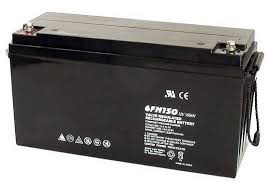
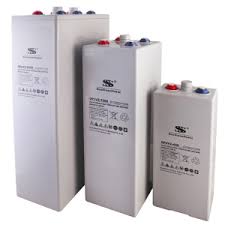
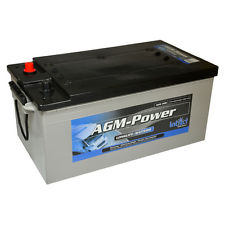
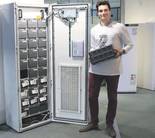
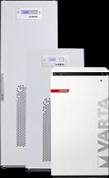
Monocrystalline Silicon (Single Silicon)
Right now, these are the most efficient types of solar panels. In other words, when sunlight hits these panels, more of it turns into electricity than the other types below. As a result of their high silicon content, they’re also more expensive, but you need fewer of them. That’s why they’re ideal for roofs. You can tell if you have a monocrystalline solar panel by its square-ish cells.

Polycrystalline Silicon (Multi-silicon)
Poly” panels have lower silicon levels than “mono” panels. In general, that makes them less expensive to produce, but they’re also slightly less efficient. The good news is that their overall construction design can often make up for the efficiency loss, so they’re also good for roofs. You can tell poly-silicon panels by their groovy mélange of silicon woven through thin rectangular conduit wires. Thin film (amorphous silicon, cadmium telluride, copper indium gallium (di)selenide). Everyone talks about “thin film” because they’re really inexpensive to make and they don’t mind the heat, which is all cool. Except right now, they’re very inefficient, which means you’ll see them in big solar farm projects with a lot of land, but not on your roof.
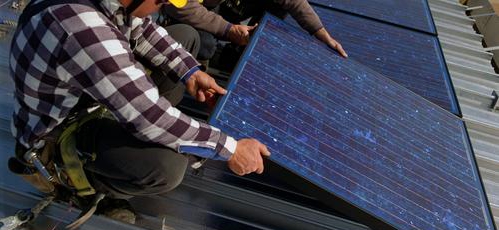
Solar Converter / Invertor
A solar inverter, or PV inverter, or Solar converter, converts the variable direct current (DC) output of a photovoltaic (PV)solar panel into a utility frequency alternating current (AC) that can be fed into a commercial electrical grid or used by a local,off-grid electrical network. It is a critical BOS–component in a photovoltaic system, allowing the use of ordinary AC-powered equipment. Solar inverters have special functions adapted for use with photovoltaic arrays, including maximum power point tracking and anti-islanding protection.
| Type | Power | Efficiency(a) |
Market share(b) |
Remarks |
|---|---|---|---|---|
| String inverter | up to 100 kWp(c) | 98% | 50% | Cost(b) €0.15 per watt-peak. Easy to replace. |
| Central inverter | above 100 kWp | 98.5% | 48% | €0.10 per watt-peak. High reliability. Often sold along with a service contract. |
| Micro-inverter | module power range | 90%–95% | 1.5% | €0.40 per watt-peak. Ease of replacement concerns. |
|
DC/DC converter Power optimizer |
module power range |
98.8% | N/A | €0.40 per watt-peak. Ease of replacement concerns. Inverter is still needed. About 0.75 GWP installed in 2013. |
